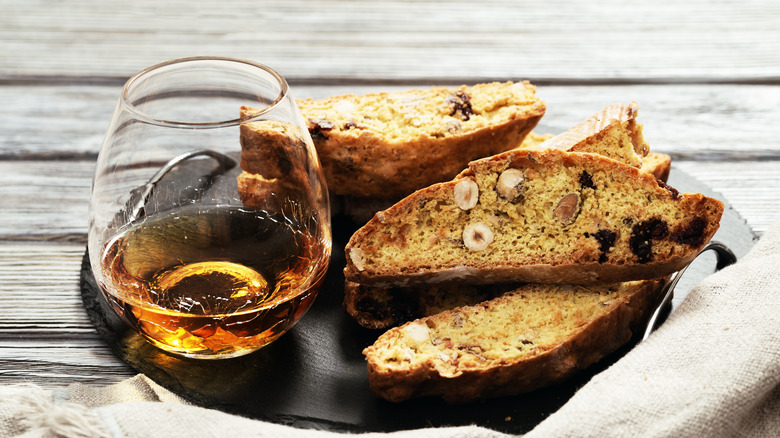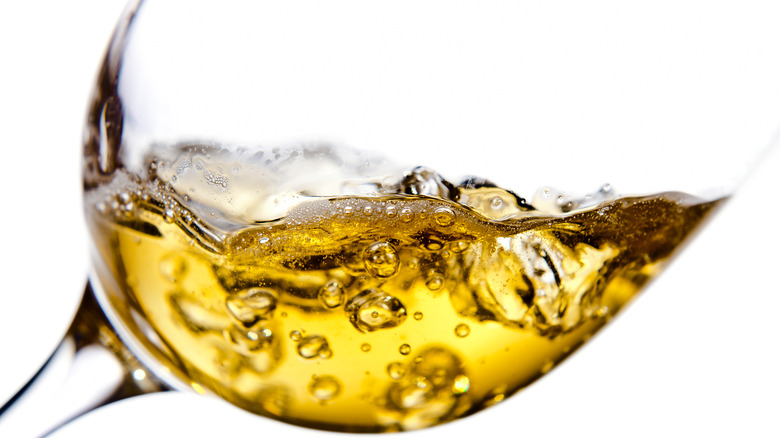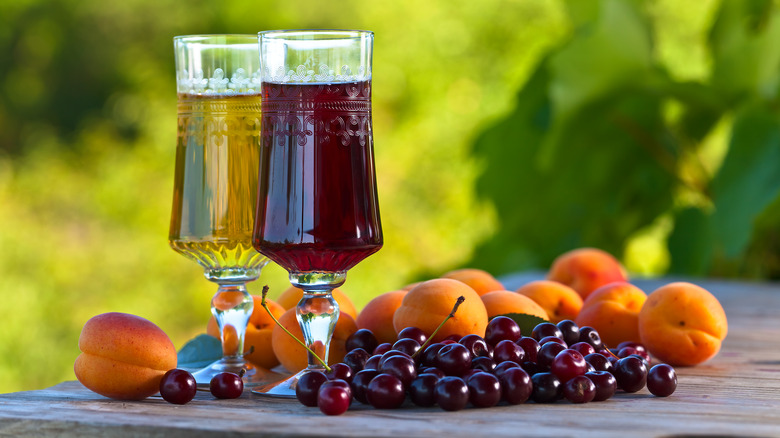What To Consider When Pairing A Wine With Dessert
Dessert is one of the great simple pleasures of life. Whether or not you have a sweet tooth, humans are biologically programmed to love the kick of energy that comes with sugar. Pairing a dessert wine with your favorite sweet treat is just a way to enhance your enjoyment even more. Although the reputation of sweet wines has had some ups and downs in the U.S., the fact remains that dessert wines are some of the oldest, most respected, and most expensive wines in the world.
When choosing a wine to pair with dessert, first you should consider what you're serving. The flavor profile of the dish and its overall sweetness will affect your best pairing choice. Think about the flavors on the plate and which elements you'd like to enhance. For example, with a dessert like strawberry spoon cake, you could choose a floral wine to highlight the fruity berries or an oaky wine to enhance the vanilla flavor in the cake.
Why pair a sweet wine with sweet food
One of the primary goals of wine pairing is to achieve a balance between the food and the wine. This means matching the overall intensity and flavor of the wine with the intensity of the food. If you're eating a very flavorful dish with a light and fresh wine, the food will overpower the wine, and you'll miss out on its more subtle flavors.
The same goes for sweetness. Dry table wines are often high in tannins and acid. These elements are delicious when paired with savory dishes, but can be unpleasant when sugar is in the mix. Sugar will make the tannins and acid in wine seem even harsher, creating an unappealing flavor. This is why the classic pairing advice is to always choose a wine that is slightly sweeter than the dish. The correct amount of sugar will not only complement the sweetness in your dessert but also enhance its flavors, so it's important to know what to look for when selecting a sweet wine.
What are some sweet wines to try
The level of sweetness in wine depends on the grapes used and on how it's processed. During winemaking, yeast converts the natural sugars in the grapes into alcohol. This fermentation naturally stops when either all the sugar has been converted or when the alcohol content is high enough to kill the yeast.
To create a sweet wine, the fermentation must stop while there is some sugar left in the wine — this is known as residual sugar. To achieve this, winemakers either start with extremely sweet grapes or intentionally stop the fermentation process before all of the sugar is gone. That is how sweet fortified wines, like Port and Sherry, are made.
The sweetness of wine is classified by the amount of residual sugar per liter. Lightly sweet wines, like Moscato D'Asti, range from 90 to 120 grams of residual sugar per liter. This makes them a good match for lightly sweet desserts. Medium-sweet desserts pair well with white or ruby Port, which contains about 90 to 140 grams of sugar per liter. For seriously sweet treats, look for a bottle with a pronounced sugar content, like French Sauterne with 120 to 220 grams per liter or Pedro Ximénez, which can contain over 300 grams of residual sugar per liter.
The best way to learn how to pair wine with dessert is to learn about your personal taste preferences. The good news is, your homework is easy: pick up a few different sweet wines and taste them each with and without a paired dessert.


